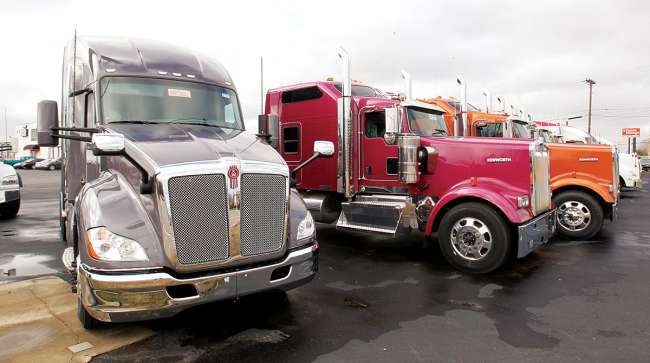Class 8 Orders in April Slow Down Again

North American Class 8 orders in April failed to break past 15,000, signaling a deeper softening in demand amid an operating environment marked by easing freight demand and uncertain economics, ACT Research Co. reported.
Orders hit 14,800, according to ACT, citing truck makers’ preliminary data to be finalized soon.
The falloff was a sharp drop from April of last year when they were 34,735 — and the lowest volume since October 2016 when they were 13,907.
“It was a squishy month,” ACT Vice President Steve Tam told Transport Topics. “Demand is getting soft. Am I ready to say freight is declining? No. I am not there yet. It is growing more slowly.”
We continue to contend that current order weakness has more to do with very large Class 8 backlogs and orders already booked, than with the current supply-demand balance between freight and trucks. #HeavyDuty #Class8 https://t.co/fSAuSycdvg pic.twitter.com/TDEFCW96cJ — ACT Research (@actresearch) May 3, 2019
The story hasn’t changed, he said. It’s low intake on the new truck order side because basically truckers are looking at lead times that stretch out in the first quarter of next year. And they are feeling too much uncertainty to want to commit to any more than what orders on the books are for. “Certainly, nobody is looking to increase their fleet and they actually are probably looking at curtailing replacement.”
One fleet said it was cutting back on orders.
“We continue to monitor trends as we progress through the first quarter and made the decision to cut about $10 million out of the tractor budget and that’s just keeping the fleet somewhat in balance with what current trends are,” Adam Satterfield, chief financial officer at Old Dominion Freight Line Inc., said in a first-quarter earnings call.
Tam estimated that amount would be for about 75 Class 8 vehicles. “We use $140,000 for the average price. It is not huge but it is a curtailed appetite.”
He added that after the tear the industry has been on with orders over the last two years, the average age of those active fleets has come down.

Leathers
Werner Enterprises CEO Derek Leathers said the average age of his fleet is 1.8 years.
“I think some of the signs that seem to indicate some rationality [in capacity] are what we’re seeing with truck orders and the significant drop year over year, and I think you’ll see that ongoing for some time,” said Leathers.
But he believes the economy is actually doing a little better than what the general commentary seems to indicate. He said the tariff effect and overall winter weather have played a larger role,
“They seem to get lower billing in the conversation versus concerns about the economy,” Leathers said. “And then the backdrop of the regulatory stuff coming out, I mean, with hair-follicle testing coming around the corner and the drug and alcohol clearinghouse, there is a natural dampening that will take place there. And that’s why we are kind of leaving our options open on the range for truck growth, meaning that we will drive to the lower end of the range, if we think that’s where we need to be.”
FTR noted cancellations at 3,000 in March were still low relative to production backlog, 256,000.
“There are a lot more people moving orders around than canceling them,” said Don Ake, vice president of commercial vehicles at FTR.
Meanwhile, Paccar Inc. is having negotiations with customers for 2020 delivery, said CEO Ron Armstrong during an earnings call.
“So, I think there is still recognition that the economy is good, the demand for freight is good, discussions with customers, people that need all freight,” he said. “There is still a pretty tight market to be able to get things delivered on a timely basis. So, we’re preparing for a continuation of the good market conditions into 2020.”

